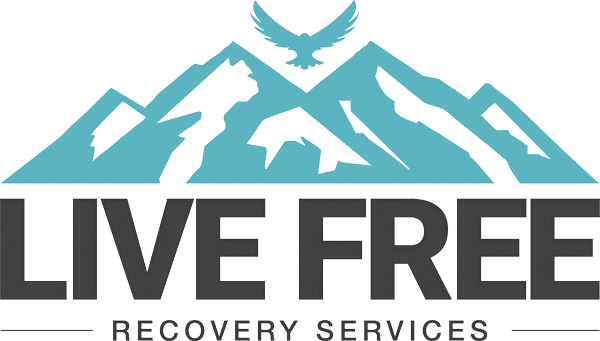Table of Contents
What is Sober Living?
Sober living is a form of addiction treatment that helps individuals adjust to a healthy and sober lifestyle. This type of addiction recovery program provides structure, support and guidance to those in recovery from substance use disorder. Sober living homes are drug-free environments that provide a safe space for individuals in recovery to transition back into the community with an increased sense of self-esteem and self-confidence.
Sober living homes typically provide a variety of recovery services, such as relapse prevention, vocational training, spiritual guidance, life skills classes and recreational activities. Residents in sober living homes are expected to attend 12 Step meetings or other support groups regularly and maintain employment or school attendance. Additionally, house rules typically prohibit the use of drugs and alcohol, smoking, illegal activities and overnight visitors.

What is a Halfway House?
A halfway house, also known as a sober living home or transition house, is an independent living facility for individuals who have been treated for alcohol addiction, substance abuse treatment and other mental health issues. It is designed to provide support, structure and guidance in the journey of recovery. Halfway houses offer residents a safe place to transition back into society and begin building a successful independent life. Residents typically stay for several months and are encouraged to develop a healthy well being, habits, learn new skills and build relationships with peers.
Halfway houses provide an increased sense of trust in the recovery community, as well as access to support and treatment services like counseling and vocational training. Additionally, halfway house staff are available 24/7 to provide assistance or answer any questions or concerns a resident may have. Halfway houses are often affiliated with mental health and addiction treatment centers, addiction treatment programs and other medical facilities, so residents can receive referrals for additional resources if needed.
Ultimately, halfway houses provide guidance and support to individuals in recovery as they transition back into society. Living in a halfway house gives recovering individuals an opportunity to learn how to adjust and thrive in a healthy, sober lifestyle. Residents are expected to abide by the house rules and regulations set forth by the staff, which usually include completing chores, attending support group meetings and maintaining regular contact with their counselors or sponsors.
How is Sober Living the Same as a Halfway House?
Sober living homes are similar to halfway houses in the sense that they both provide a supportive, safe environment for individuals striving towards sobriety and long-term recovery. Both types of housing programs require tenants to remain sober, adhere to scheduled activities (e.g., attending 12-step meetings), and maintain consistent employment or school attendance. In addition, individuals in both sober living homes and halfway houses are expected to contribute to the community by completing chores and engaging in peer support.
How is Sober Living Different from Halfway Houses?
Sober living is different from a halfway house in several ways. For starters, sobriety is expected and enforced more strictly in sober living homes than in a halfway house. Sober living houses are typically unstructured environments, where residents are responsible for maintaining their own schedules, abiding by the rules of the house, and finding employment or other means of financial aftercare support. In a halfway house, there may be some structure in place, and residents may receive assistance with finding employment or other sources of income.
Another distinction between sober living and halfway houses is that sober living houses are often co-ed, while many halfway houses are gender-specific. Additionally, sober living homes have a much lower cost of living than many halfway houses, as they typically only require a monthly fee, while halfway houses may have rental costs associated with them.
Finally, sober living homes are often more focused on providing peer support to residents than halfway houses. In a sober living home, residents are encouraged to interact and build relationships with one another as part of their recovery journey. This peer support can be invaluable for those struggling with alcohol or drug addiction, and it can help them develop a strong sense of community in their new environment. In contrast, halfway houses may be more structured and involve little to no peer interaction among residents.
The Benefits of a Women’s Only Halfway House?
A women’s only halfway house can be a powerful force for positive change in the lives of those part of the women’s rehab program. It provides an environment where women can receive support, assistance, and guidance as they transition from difficult situations to healthier, more productive lifestyles. By providing a safe space with resources, understanding and trauma informed staff members, a halfway house empowers its residents to rebuild their lives with dignity and respect.
The benefits of a women’s only halfway house are far-reaching and include the following:
- Emotional Support
- Financial Assistance
- Access to Counseling Services
- Life Skills Coaching
- Mentoring Support
- Employment Assistance
- Why is a Continuum of Care Important?
How Effective are Sober Living Homes?

Sober living homes can be an effective way to support individuals who are recovering from substance abuse and addiction. These residences provide a safe, structured environment that helps individuals develop the skills needed to live a healthy life without drugs or alcohol. Residents typically remain in sober living for at least 90 days but can stay up to one year or longer, depending on their recovery needs.
Sober living homes offer residents the opportunity to stay accountable for their recovery while building new skills for daily living. While in detox, individuals learn how to live independently without substance dependency or alcohol abuse as coping mechanisms. This education can be invaluable when transitioning back into society after completing treatment.
Are there Rules for Halfway Houses?
Yes, there are rules for halfway houses. Halfway houses provide a supportive environment for individuals transitioning from prison to the community and can be an important part of successful reentry into society. Depending on the treatment facility, rules may vary but typically include the following:
- Abiding by all house and safety regulations
- Participating in drug testing
- Participating in individual therapy and/or group therapy sessions
- Following a curfew
- Respecting other residents, staff, and the facility
- Completing court-ordered community service hours
- Paying rent on time
- Staying sober while living in the facility
These rules are designed to keep everyone safe and help former inmates adjust to living in the community. Halfway house staff members work closely with residents and often provide them with activities, such as job placement assistance, educational classes and personal counseling for mental health treatment, co-occurring disorders such ranging from mental health disorders to eating disorders, and dual diagnosis, as well as the development of a specific treatment plan to ensure that individual requirements are satisfied. Residents are also expected to actively participate in their own recovery treatment process by attending 12-step meetings, therapy sessions and other events that focus on reintegration.
Take the Next Step in Your Recovery Journey Today
Addiction is a difficult mountain to climb, but you don’t have to do it alone. There are plenty of options in New Hampshire at Live Free Recovery Center to get you started. If you or a loved one would like to find out more, please reach out and contact us today. We provide a variety of therapy options that are especially suited to the needs of women.
Published on: 2023-02-03
Updated on: 2024-06-26
